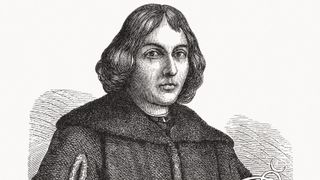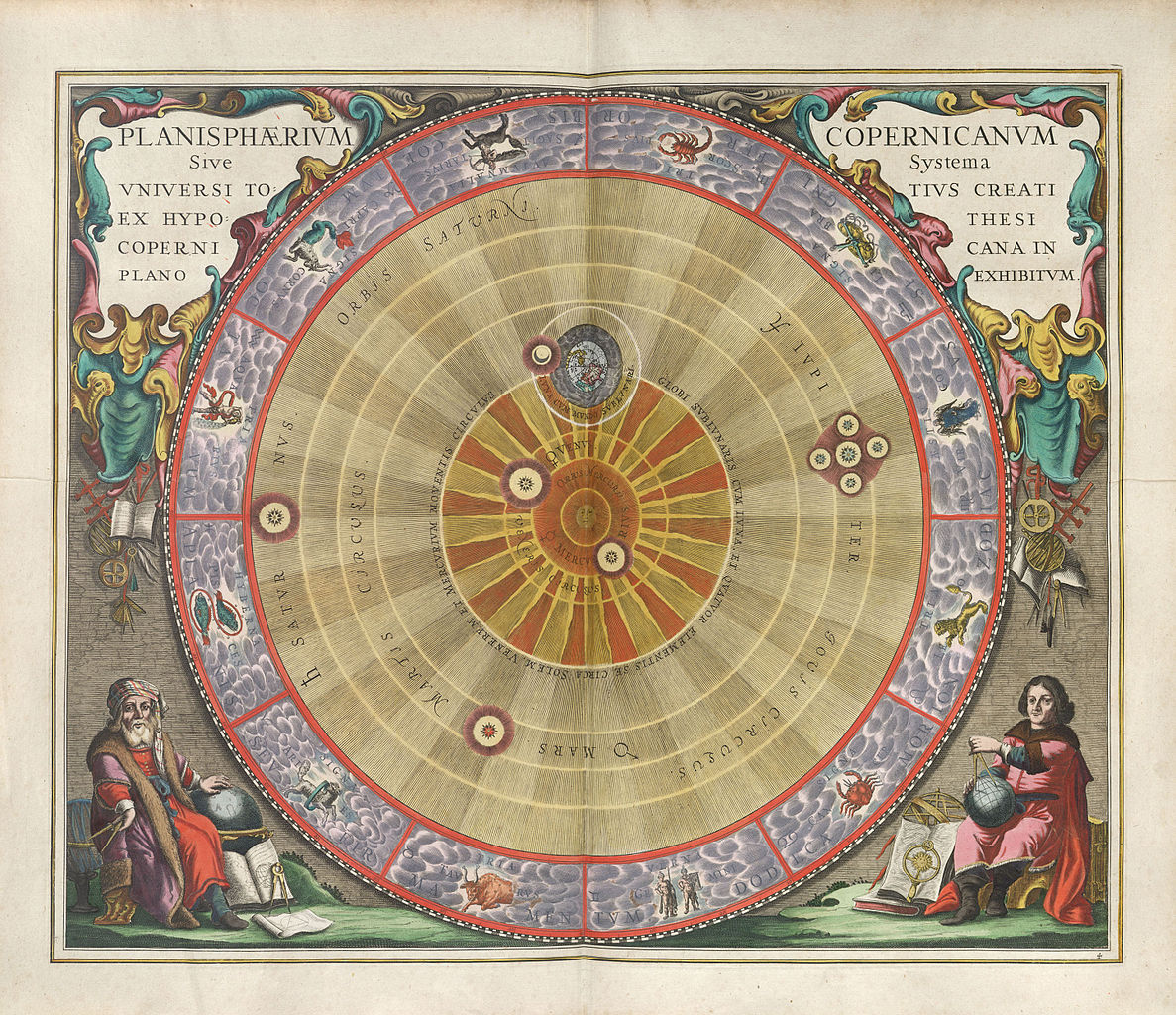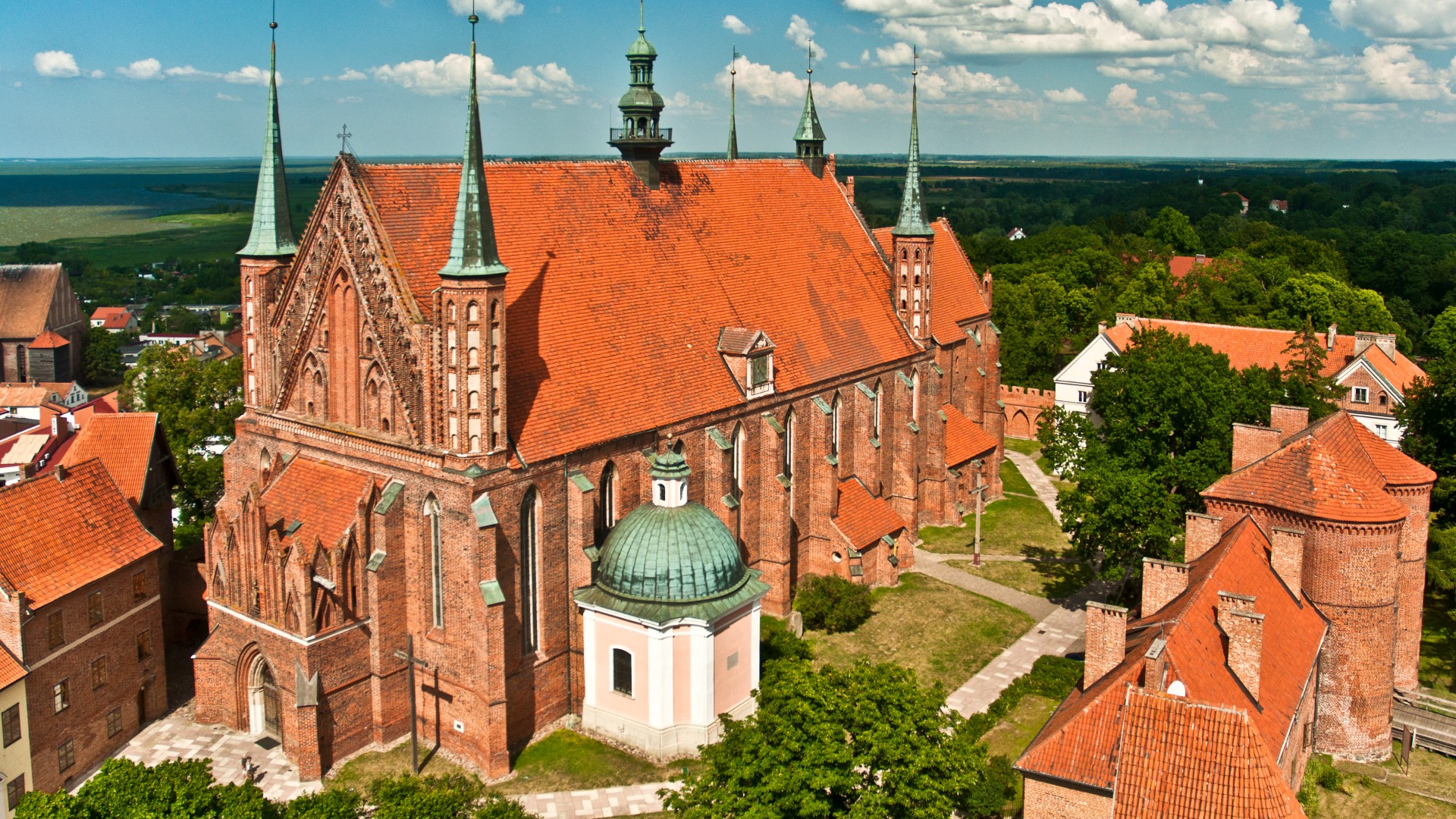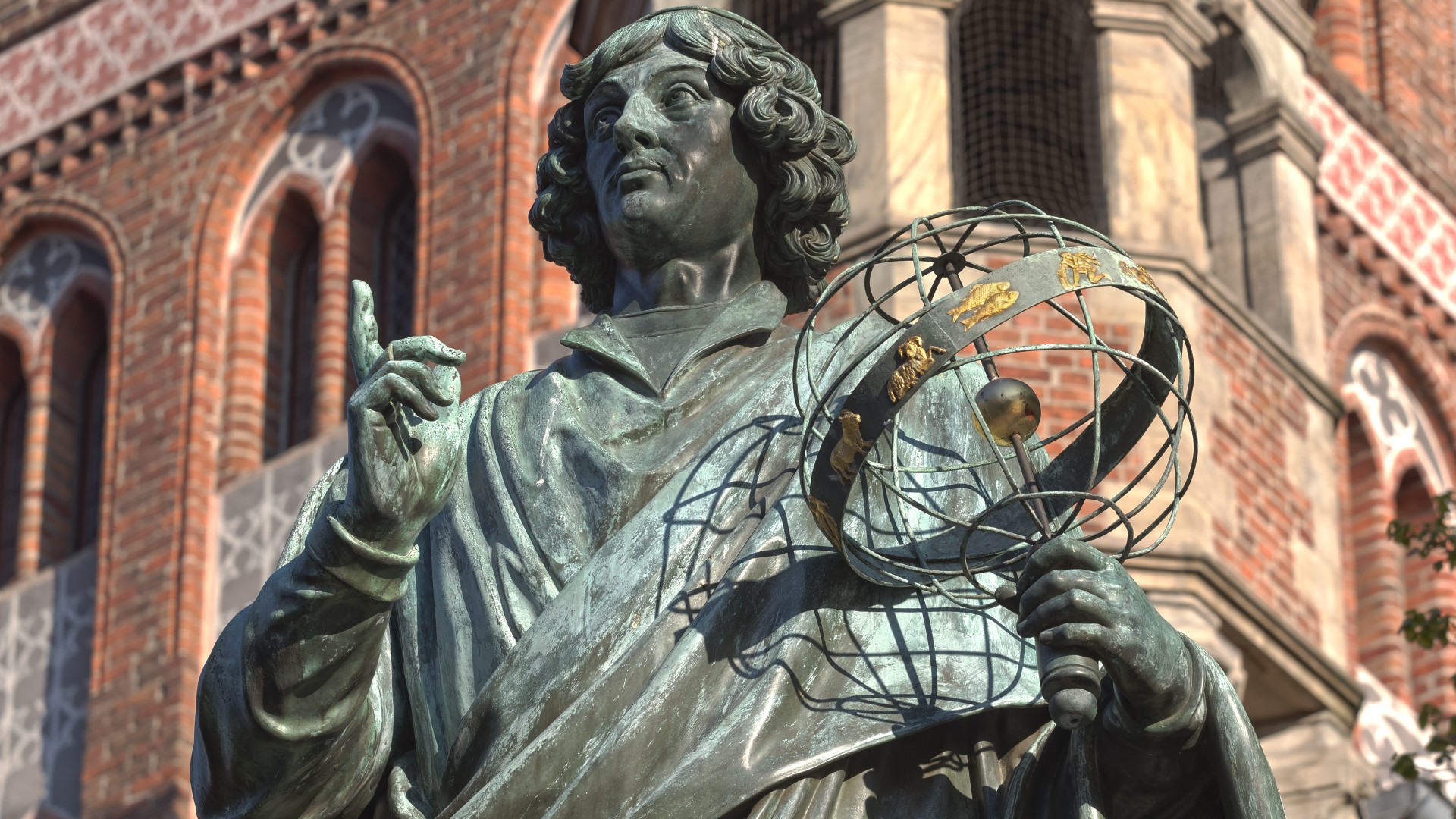For 3 Days the Sun Is Motionless Until It Again Rises Into the Heavens.
Nicolaus Copernicus biography: Facts & discoveries

Nicolaus Copernicus proposed his theory that the planets revolved effectually the sun in the 1500s, when most people believed that Earth was the center of the universe. Although his model wasn't completely correct, it formed a stiff foundation for future scientists, such as Galileo, to build on and ameliorate humanity's understanding of the motion of heavenly bodies.
Indeed, other astronomers built on Copernicus' piece of work and proved that our planet is just i world orbiting one star in a vast cosmos loaded with both, and that we're far from the heart of anything.
Countdown: The most famous astronomers of all time
Teaching
Born on February. 19, 1473, in Toruń, Poland, Mikolaj Kopernik (Copernicus is the Latinized form of his proper noun) traveled to Italia to attend college, co-ordinate to the Encyclopedia Britannica. Copernicus' father had died when the child was young, and his uncle became a leading effigy in his life.
Copernicus' uncle wanted him to study the laws and regulations of the Catholic Church and then render home to become a canon, a type of official in the Cosmic Church.
Even so, while visiting several academic institutions, Copernicus spent almost of his time studying mathematics and astronomy. While attention the University of Bologna, Copernicus lived and worked with astronomy professor Domenico Maria de Novara, doing inquiry and helping him make observations of the heavens.
Due to his uncle's influence, Copernicus did go a canon in Warmia, in northern Poland, although he never took orders equally a priest. He conducted his astronomical enquiry in between his duties as canon, the Encyclopedia Britannica noted.
The Copernican model of the solar organisation

In Copernicus' lifetime, most believed that World held its identify at the middle of the universe. The sun, the stars, and all of the planets revolved effectually information technology.
One of the glaring mathematical problems with this model was that the planets, on occasion, would travel backward across the heaven over several nights of observation. Astronomers called this retrograde motion. To account for it, the current model, based on the Greek astronomer and mathematician Ptolemy'south view, incorporated a number of circles within circles — epicycles — inside of a planet's path. Some planets required equally many every bit seven circles, creating a cumbersome model many felt was too complicated to have naturally occurred.
In 1514, Copernicus distributed a handwritten book to his friends that prepare out his view of the universe. In information technology, he proposed that the center of the universe was non Earth, only that the sun lay near it. He also suggested that Earth'southward rotation accounted for the ascension and setting of the sun, the movement of the stars, and that the cycle of seasons was caused by Earth'southward revolutions effectually information technology.
Finally, he (correctly) proposed that World'southward motion through space caused the retrograde motion of the planets beyond the night heaven (planets sometimes move in the same directions as stars, slowly beyond the sky from night to night, but sometimes they motility in the contrary, or retrograde, direction).
Copernicus finished the commencement manuscript of his book, "De Revolutionibus Orbium Coelestium" ("On the Revolutions of the Heavenly Spheres") in 1532. In it, Copernicus established that the planets orbited the sunday rather than the Earth. He laid out his model of the solar system and the path of the planets.
He didn't publish the book, notwithstanding, until 1543, but ii months before he died. He diplomatically defended the book to Pope Paul 3. The church did not immediately condemn the volume every bit heretical, perhaps because the printer added a note that said even though the book's theory was unusual, if it helped astronomers with their calculations, it didn't affair if it wasn't really true. It probably besides helped that the subject was so hard that but highly educated people could understand it. The Church did eventually ban the book in 1616, co-ordinate to Physics Today.
The Catholic Church building wasn't the only Christian faith to reject Copernicus' idea.
"When 'De Revolutionibus Orbium Coelestium' was published in 1543, religious leader Martin Luther voiced his opposition to the heliocentric solar system model," says Biography.com. "His underling, Lutheran minister Andreas Osiander, rapidly followed adapt, proverb of Copernicus, 'This fool wants to turn the whole fine art of astronomy upside down.'"
Copernicus died on May 24, 1543, of a stroke. He was lxx.
Where was Copernicus buried?

In 2008, researchers announced that a skull establish in Frombork Cathedral did vest to the astronomer, according to The Guardian. By matching Deoxyribonucleic acid from the skull to hairs found in books once owned by Copernicus, the scientists confirmed the identity of the astronomer. Polish constabulary so used the skull to reconstruct how its possessor might have looked.
Nature quotes the AFP as stating that the reconstruction "diameter a striking resemblance to portraits of the young Copernicus."
In 2010, his remains were blessed with holy water by some of Poland's highest-ranking clerics earlier being reburied, his grave marked with a black granite tombstone decorated with a model of the solar system. The tomb marks both his scientific contribution and his service as church canon.
"Today'due south funeral has symbolic value in that it is a gesture of reconciliation between science and faith," Jacek Jezierski, a local bishop who encouraged the search for Copernicus, said according to the Associated Printing. "Science and organized religion can exist reconciled."
The unmarked grave was not linked to suspicions of heresy, as his ideas were only simply being discussed and had notwithstanding to be forcefully condemned, according to Jack Repcheck, author of "Copernicus' Secret: How the Scientific Revolution Began."
"Why was he just buried along with anybody else, like every other canon in Frombork?" Repcheck said. "Because at the fourth dimension of his decease he was just whatsoever other canon in Frombork. He was not the iconic hero that he has become."
Refining the work of Copernicus

Although Copernicus' model inverse the layout of the universe, it still had its faults. For 1 thing, Copernicus held to the classical idea that the planets traveled in perfect circles. It wasn't until the 1600s that Johannes Kepler proposed the orbits were instead ellipses. As such, Copernicus' model featured the same epicycles that marred Ptolemy's work, although in that location were fewer.
Copernicus' ideas took nearly a hundred years to seriously accept hold. When Galileo Galilei claimed in 1632 that World orbited the dominicus, edifice upon the Polish astronomer'due south work, he establish himself nether firm abort for committing heresy confronting the Catholic Church.
Despite this, the observations of the universe proved the two men correct in their understanding of the motion of celestial bodies. Today, we phone call the model of the solar system, in which the planets orbit the sun, a heliocentric or Copernican model.
"Sometimes Copernicus is honored as having substituted the old geocentric organization with the new, heliocentric one, as having regarded the dominicus, instead of the Earth, as the unmoving center of the universe," Konrad Rudnicki, an astronomer and author of "The Cosmological Principles," wrote. "This view, while quite right, does non render the actual significance of Copernicus's work."
Co-ordinate to Rudnicki, Copernicus went beyond but creating a model of the solar system.
"All his work involved a new cosmological principle originated past him. Information technology is today called the Genuine Copernican Cosmological Principle and says, 'The Universe as observed from whatsoever planet looks much the aforementioned,'" Rudnicki wrote.
So while Copernicus' model physically placed the sun at the eye of the solar system, it too figuratively removed the focus from World, making it just another planet.
Additional resources
Y'all can read the English translation of Copernicus' manuscript "De Revolutionibus Orbium Cœlestium" here. Bank check out the complete works of Nicholas Copernicus Consummate in "On the Revolutions: Nicholas Copernicus Complete Works (Foundations of Natural History)". Likewise, discover the many artefacts at the British Museum regarding Nicolaus Copernicus, hither.
Bibliography
Jack Repcheck, "Copernicus' Secret: How the Scientific Revolution Began," Simon & Schuster, 2008.
Sheila Rabin, "Nicolaus Copernicus," The Stanford Encyclopedia of Philosophy, 2019.
Fred Hoyle, "The work of Nicolaus Copernicus," Proceedings of the Royal Guild A, Volume 336, Jan 1974, https://doi.org/10.1098/rspa.1974.0009.
Teresa Zielinska, "Nicolaus Copernicus (1473–1543)," Distinguished Figures in Mechanism and Machine Science, History of Mechanism and Machine Science Book 1, 2007, https://doi.org/x.1007/978-i-4020-6366-4_5
Join our Space Forums to keep talking space on the latest missions, night heaven and more! And if you have a news tip, correction or comment, permit united states of america know at: community@space.com.
Source: https://www.space.com/15684-nicolaus-copernicus.html

0 Response to "For 3 Days the Sun Is Motionless Until It Again Rises Into the Heavens."
Post a Comment